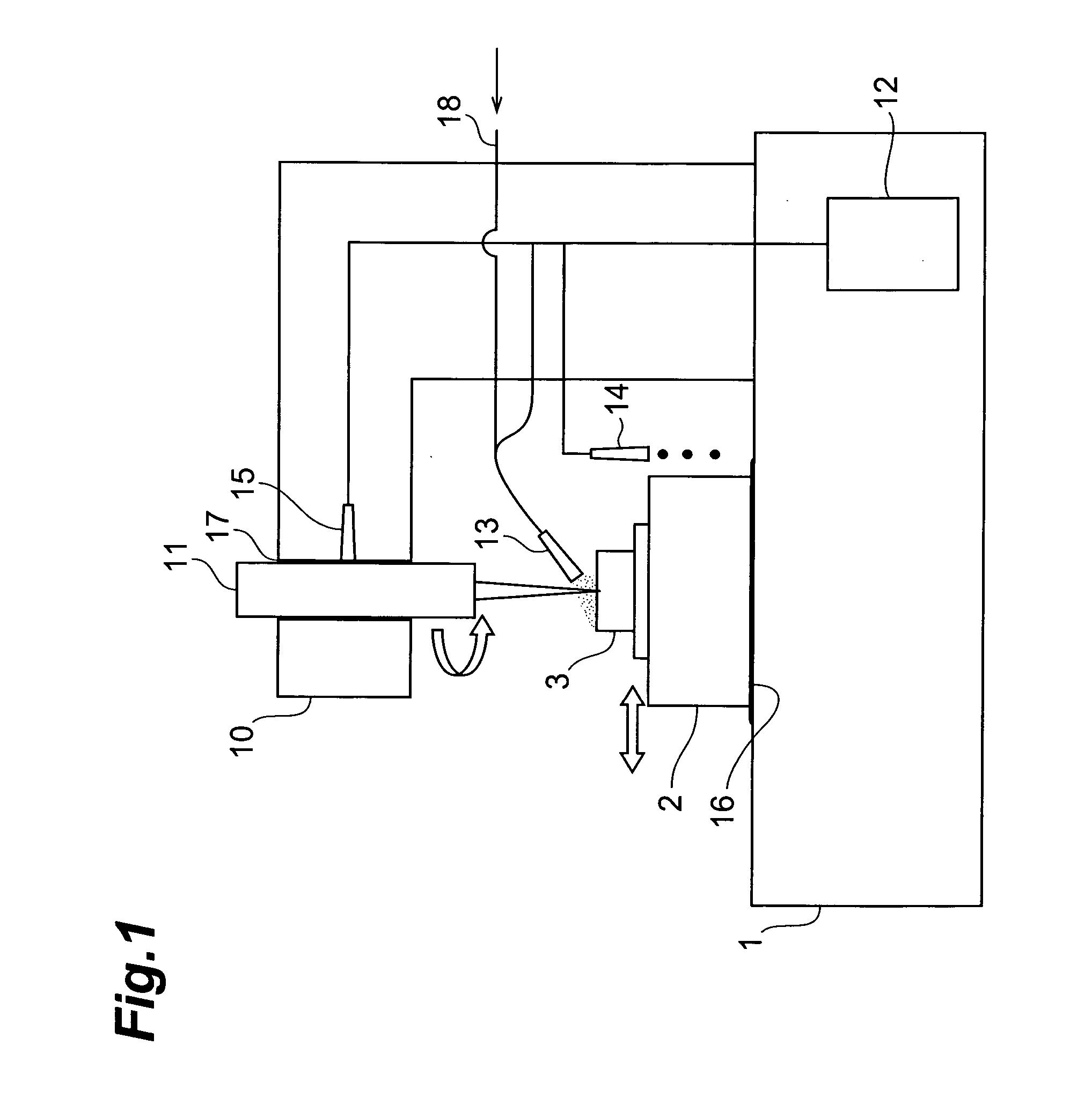Metal Working Fluid
- Summary
- Abstract
- Description
- Claims
- Application Information
AI Technical Summary
Benefits of technology
Problems solved by technology
Method used
Image
Examples
examples
[0204] The present invention will now be explained in further detail by examples and comparative examples, with the understanding that the invention is in no way limited by the examples.
examples 1-21
, Comparative Examples 1-2
[0205] For Examples 1-21 and Comparative Examples 1-2, oils for metal working were prepared having the compositions listed in Tables 1-6, using the base oils and additives listed below. Tables 1-6 also show the kinematic viscosity at 40° C. and the moisture content of each obtained oil for metal working. The fatty acid composition and total degree of unsaturation of the base oils A4 are listed in Table 7.
(Base Oils)
[0206] A1: Trimethylolpropane and oleic acid triester (kinematic viscosity at 40° C.: 46 mm2 / s) [0207] A2: Neopentyl glycol and oleic acid diester (kinematic viscosity at 40° C.: 24 mm2 / s) [0208] A3: Isodecyl alcohol and adipic acid diester (kinematic viscosity at 40° C.: 14 mm2 / s) [0209] A4: High-oleic rapeseed oil (kinematic viscosity at 40° C.: 39 mm2 / s) [0210] B1: Hydrogenated 1-decene dimer (kinematic viscosity at 40° C.: 4.5 mm 2 / s) [0211] B2: Hydrogenated 1-decene trimer (kinematic viscosity at 40° C.: 19 mm2 / s) [0212] B3: White oil (ki...
examples 22-36
, Comparative Examples 3-8
[0246] For Examples 22-36 and Comparative Examples 3-8, oils for metal working were prepared using the base oils and additives listed below, with adjustment of the moisture content, to yield the compositions and moisture contents listed in Tables 8-13. Tables 8-13 show the compositions of the oils for metal working with 100% by mass as the total of the base oil and additive contents and moisture contents. Tables 8-13 also show the kinematic viscosity at 40° C. for each obtained oil for metal working. The base oil A4 fatty acid compositions and total degrees of unsaturation are as shown in Table 7 above.
(Ester Oils)
[0247] A5: Mixed ester of trimethylolpropane and oleic acid triester and neopentylglycol and oleic acid diester (kinematic viscosity at 40° C.: 32 mm2 / s) [0248] A3: Isodecyl alcohol and adipic acid diester (kinematic viscosity at 40° C.: 14 mm2 / s) [0249] A4: High-oleic rapeseed oil (kinematic viscosity at 40° C.: 39 mm2 / s)
(Additives) [0250] C...
PUM
| Property | Measurement | Unit |
|---|---|---|
| Fraction | aaaaa | aaaaa |
| Kinematic viscosity | aaaaa | aaaaa |
| Temperature | aaaaa | aaaaa |
Abstract
Description
Claims
Application Information
 Login to View More
Login to View More - R&D
- Intellectual Property
- Life Sciences
- Materials
- Tech Scout
- Unparalleled Data Quality
- Higher Quality Content
- 60% Fewer Hallucinations
Browse by: Latest US Patents, China's latest patents, Technical Efficacy Thesaurus, Application Domain, Technology Topic, Popular Technical Reports.
© 2025 PatSnap. All rights reserved.Legal|Privacy policy|Modern Slavery Act Transparency Statement|Sitemap|About US| Contact US: help@patsnap.com



